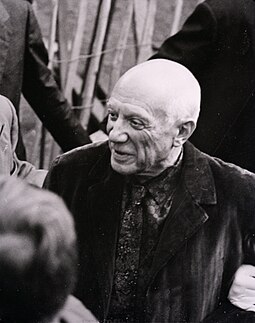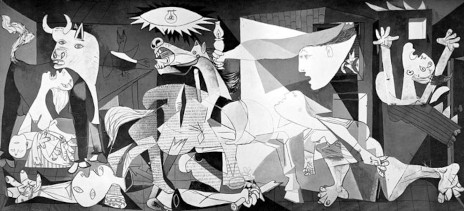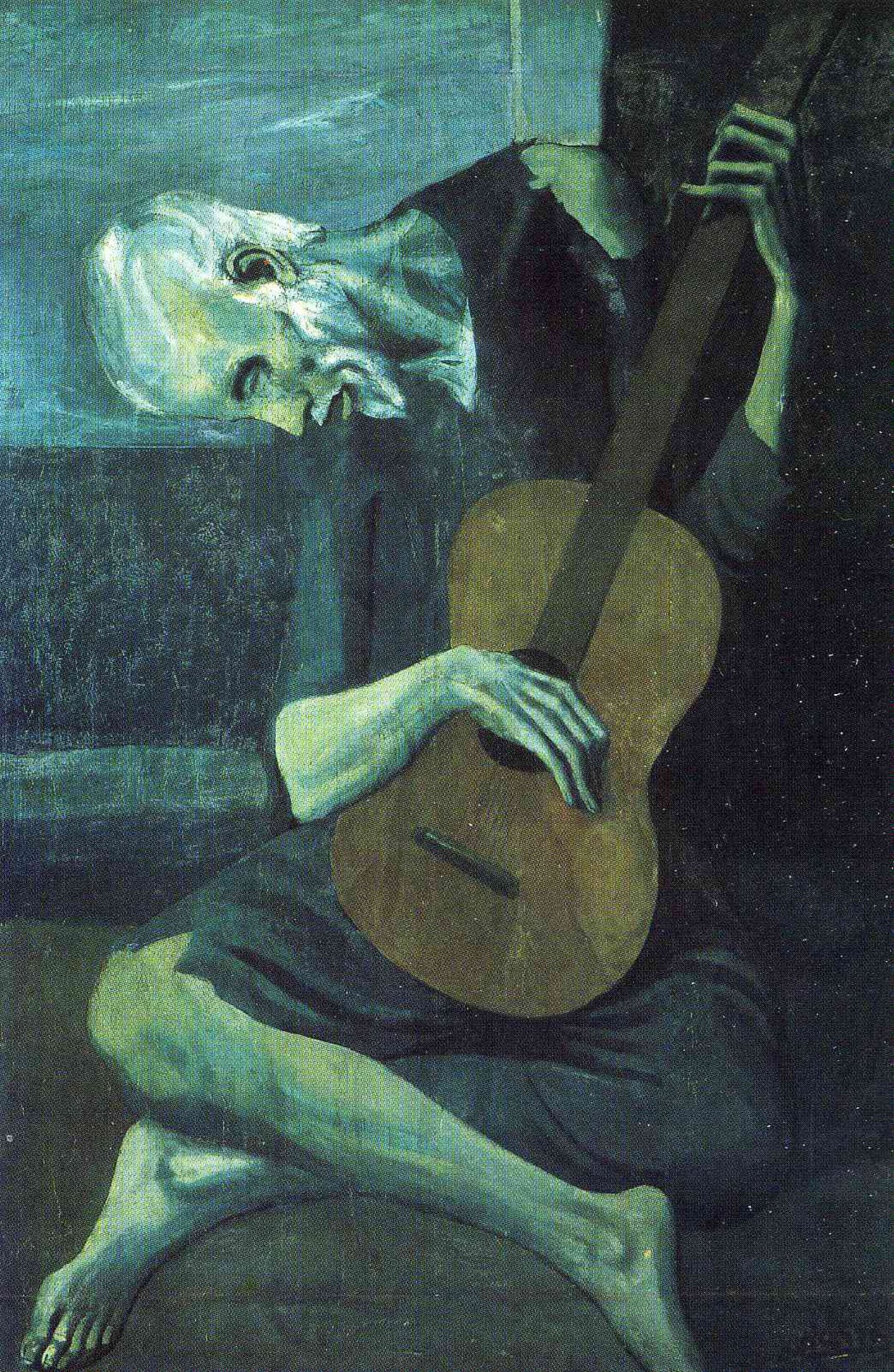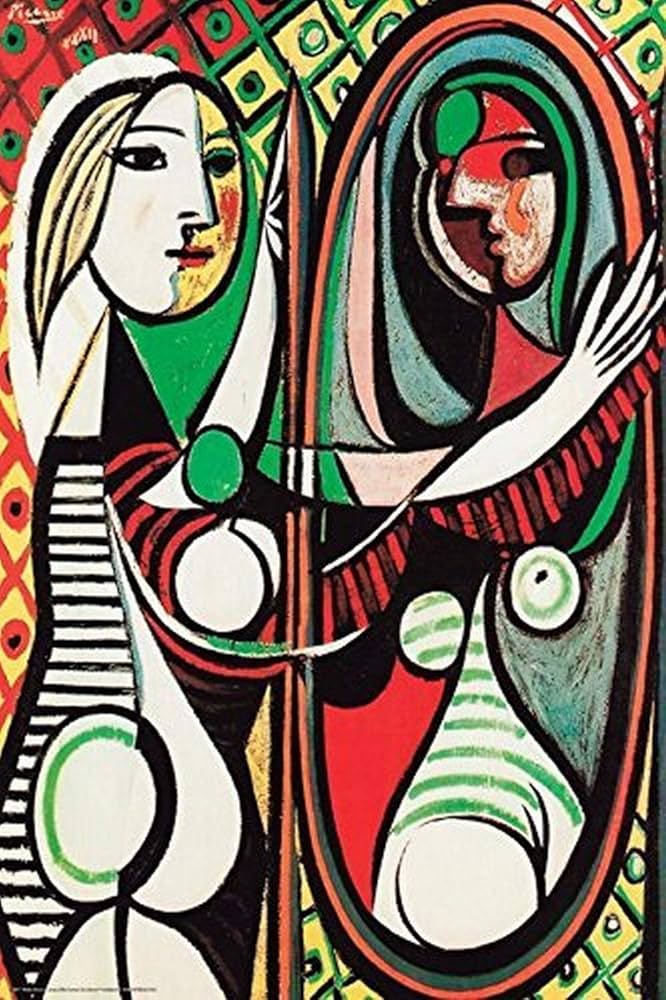Overview
Pablo Picasso, one of the most prolific and influential artists of the 20th century, created an astounding body of work over his lifetime. With an estimated 50,000 pieces to his name, including paintings, drawings, sculptures, ceramics, prints, and more, Picasso's artistic output is unparalleled in both its volume and diversity. Born in Málaga, Spain, in 1881, Picasso spent much of his career in France, where he developed and experimented with groundbreaking techniques and styles that reshaped the art world.
Picasso worked with a wide range of materials, from traditional oil on canvas to unconventional mediums like found objects and ceramics. His ability to innovate was matched only by his dedication to his craft, often producing multiple works in a single day. Throughout his career, Picasso explored numerous artistic styles, including Cubism, Surrealism, and Neo-Classicism, continuously challenging the boundaries of visual representation.
Watch Picasso make a masterpiece:
Many of Picasso's works are housed in prestigious museums and private collections around the world, with notable concentrations at the Musée Picasso in Paris and the Museo Picasso in Barcelona. His art reflects not only his personal evolution but also the cultural and political climate of the times, making him a true chronicler of the human experience through his unique vision.
Below, we delve into five of Picasso's most famous and impactful works, each a testament to his genius and enduring legacy in the art world.

Picasso photographed in 1953.
1. Les Demoiselles d'Avignon (1907)
"Les Demoiselles d'Avignon" is widely regarded as one of Pablo Picasso's most groundbreaking works and a pivotal moment in the evolution of modern art. Completed in 1907, the painting depicts five female figures in a brothel, their forms fragmented and faces mask-like. Measuring 8 feet by 7 feet, the work is monumental not just in size but in its radical departure from traditional artistic conventions.
Picasso was heavily influenced by African and Iberian art while creating this piece, evident in the angular, almost brutalist treatment of the figures' faces. The mask-like appearance of the women's faces, particularly those on the right, draws directly from African art, which Picasso encountered during visits to ethnographic museums in Paris. This choice was revolutionary at the time and a deliberate challenge to European-centric notions of beauty and representation.
The composition abandons traditional perspective, with figures overlapping and existing in a flattened, fragmented space. Unlike the soft, sensual portrayals of nudes by contemporaries, Picasso's figures are confrontational and unsettling, with exaggerated, almost grotesque forms. The central figure's twisted body is especially jarring, defying classical ideals of proportion and elegance. This abstraction laid the foundation for the development of Cubism, which Picasso co-founded shortly after completing this work.
Thematically, "Les Demoiselles d'Avignon" engages with complex ideas about sexuality, power, and the human condition. The brothel setting introduces an element of voyeurism, confronting the viewer with the raw, unidealized reality of the women's existence. At the same time, the distorted forms create a sense of alienation, forcing viewers to reconsider their own perceptions of identity and beauty. Initially met with shock and resistance, the painting has since been recognized as a masterpiece that redefined the boundaries of art. Today, it resides in the Museum of Modern Art (MoMA) in New York, where it continues to provoke and inspire.

Les Demoiselles d'Avignon.
2. Guernica (1937)
"Guernica" is perhaps Picasso's most famous and politically charged work, created as a response to the bombing of the town of Guernica during the Spanish Civil War. Painted for the 1937 World's Fair in Paris, the mural-sized canvas (over 11 feet tall and 25 feet wide) is a harrowing depiction of the horrors of war. Using a monochromatic palette of black, white, and gray, Picasso stripped the painting of any romanticism, instead presenting a raw, visceral portrayal of human suffering.
At the center of the composition is a horse, its mouth agape in a scream of agony. Surrounding it are fragmented and distorted figures: a woman holding her dead child, her face frozen in a silent wail; a dismembered soldier clutching a broken sword; and a bull, standing stoic and menacing, symbolizing brutality and resilience. The fractured composition mirrors the chaos of the event itself, with jagged lines and overlapping forms creating a sense of disarray and confusion.
The absence of color intensifies the emotional impact of the work. The stark contrasts between light and shadow evoke the immediacy of a newspaper photograph, emphasizing the real-world tragedy that inspired the painting. At the same time, the flattened forms and fragmented space reflect Picasso's Cubist style, lending the work an abstract, universal quality.
"Guernica" is not merely a depiction of an event; it is a timeless commentary on the senselessness and inhumanity of war. The piece was created at a time when Europe was on the brink of World War II, and its message remains relevant in the context of modern conflicts. Today, "Guernica" is housed in the Museo Reina Sofía in Madrid, where it continues to stand as a powerful symbol of anti-war sentiment and artistic activism.

Guernica.
3. The Old Guitarist (1903-1904)
Painted during Picasso's Blue Period, "The Old Guitarist" is a poignant exploration of human suffering and resilience. The painting depicts a frail, elderly man hunched over his guitar, his elongated limbs and gaunt features emphasizing his physical and emotional desolation. The muted blue tones, characteristic of this period, create an atmosphere of melancholy and introspection.
The composition is stark, with the man and his guitar occupying most of the frame. The guitar, painted in warm brown tones, stands out against the otherwise cool palette, serving as a symbol of hope and solace amidst despair. Its relative size and central position suggest its importance to the man's existence, as if it's the only thing anchoring him to life.
This work was created during a difficult time in Picasso's life, following the suicide of a close friend and his own financial struggles. The themes of poverty, isolation, and the transformative power of art reflect Picasso's personal experiences and broader social concerns. The elongated forms of the figure are reminiscent of El Greco, a Spanish artist whose work deeply influenced Picasso during this period.
Interestingly, X-rays of the painting have revealed an earlier composition beneath the surface, depicting a woman with a child. This discovery highlights Picasso's process of reworking and repurposing his canvases, a practice born out of both necessity and artistic exploration.
"The Old Guitarist" is now housed in the Art Institute of Chicago, where it continues to resonate with viewers for its emotional depth and universal themes. The painting remains a testament to Picasso's ability to convey profound human truths through his art.

The Old Guitarist.
4. Girl Before a Mirror (1932)
"Girl Before a Mirror" is one of Picasso's most iconic works from his Surrealist period, depicting his young mistress and muse, Marie-Thérèse Walter. The painting features a woman gazing at her reflection in a mirror, but the reflection is distorted, almost grotesque, suggesting a duality between the inner and outer self.
The vibrant colors and bold patterns are characteristic of Picasso's work during this period, but the composition's psychological complexity sets it apart. The woman's face is rendered in two halves: one smooth and idealized, the other dark and shadowed, hinting at themes of duality and self-perception. The reflection in the mirror presents a stark contrast to the figure's outward appearance, suggesting an inner turmoil or the passage of time.
The use of geometric forms and overlapping shapes reflects Picasso's Cubist influences, while the dreamlike quality aligns with Surrealism. The interplay of light and shadow further emphasizes the contrast between reality and perception. Some art historians interpret the work as a meditation on mortality, with the reflection symbolizing the inevitability of aging and the ephemeral nature of beauty.
Beyond its symbolic depth, "Girl Before a Mirror" is a celebration of color and form. The juxtaposition of warm and cool tones creates a dynamic visual experience, drawing the viewer's eye across the canvas. Today, the painting is part of the collection at the Museum of Modern Art (MoMA) in New York, where it remains a favorite among visitors for its beauty and mystery.

Girl Before A Mirror.
5. Three Musicians (1921)
"Three Musicians" is a vibrant, playful example of Synthetic Cubism, depicting three figures—a harlequin, a pierrot, and a monk—playing instruments. Despite its flat, collage-like appearance, the painting is meticulously composed, with each shape and color carefully placed to create a sense of harmony and rhythm.
The harlequin, often seen as a stand-in for Picasso himself, is positioned in the center, holding a guitar. To his left is the pierrot, a figure associated with melancholy, and to his right is the monk, adding an air of mystery. The overlapping geometric shapes and bold color palette create a lively, almost musical quality, as if the painting itself is a performance.
Some art historians interpret "Three Musicians" as a tribute to Picasso's friendships with poet Guillaume Apollinaire and playwright Max Jacob, both of whom were significant influences in his life. The harlequin, pierrot, and monk are thought to represent the trio, with Apollinaire as the pierrot and Jacob as the monk. This interpretation adds a layer of personal meaning to the work, making it not just a visual feast but also a celebration of camaraderie and artistic collaboration.
The painting's flatness and simplified forms reflect the influence of Synthetic Cubism, a style Picasso developed in collaboration with Georges Braque. By incorporating elements of collage and abstraction, Picasso created a work that is both visually striking and conceptually rich. Today, "Three Musicians" is housed in the Museum of Modern Art (MoMA) in New York, where it continues to captivate audiences with its energy and innovation.

Three Musicians.
